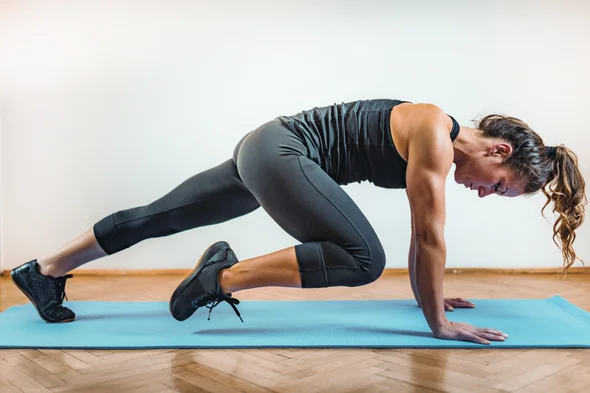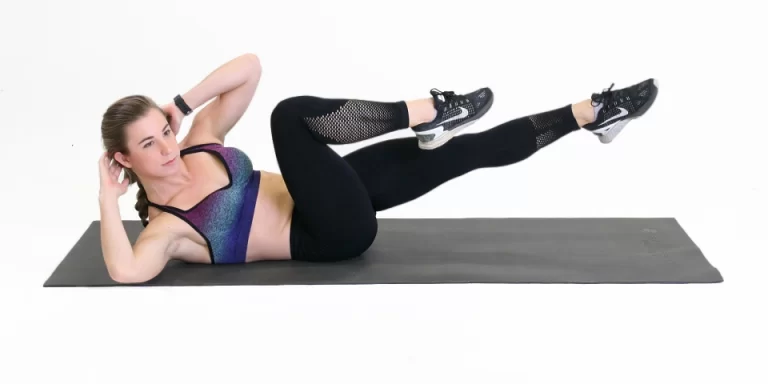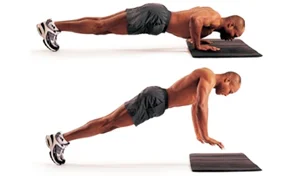High Intenisty Interval Training
Table of Contents
Introduction
High Intensity Interval Training, commonly known as HIIT, is a popular form of exercise that has gained significant attention in recent years. HIIT is a training method that alternates between short bursts of intense exercise and brief periods of active recovery or rest. This approach to fitness has become popular due to its time efficiency and numerous health benefits.
It consists of a number of rounds that alternate between long stretches of high-intensity exercise to markedly raise the heart rate to at least 80% of one’s maximal heart rate and short bursts of lower-intensity exercise. Sprint interval training, a more intense form of interval training that reached 100% of the maximal heart rate and was used to enhance the performance of elite Olympic athletes, was first introduced in the 1950s.
It is possible to use body weight as the primary source of resistance without the usage of extra tools. HIIT workouts are perfect for a home workout because they often don’t take up much space. Exercises like running (indoors or on a treadmill), dancing, using rowing machines, stationary bicycles, or stair climbers can all be combined with HIIT sessions. One to five-minute music tracks can be used to time the interval lengths.
The phrases Tabata and circuit training are also interchangeable with HIIT. Professor Izumi Tabata created the high-intensity interval training method called Tabata in 1996 with Olympic speedskaters. His exercise sessions were highly intense, with only a few seconds of relaxation in between. Fitness facilities and gyms that provide Tabata courses normally last 20 to 30 minutes and push participants to work out as hard as they can while still having self-control. 8–12 workout stations that focus on different muscle groups are used in circuit training. Each station is visited by participants once, and they complete a lengthy activity at each station. The difference between HIIT and circuit training is that HIIT stimulates maximum effort by attaining 80–90% of one’s maximum heart rate.
Although HIIT can aid in reducing body fat, boosting strength and endurance, and improving health outcomes, it is not always superior to other workout types. Its key value is that it incorporates rest periods and can produce comparable fitness and health benefits in a shorter amount of time.
What is High-Intensity Interval Training (HIIT)?
Short bursts of intensive activity are interspersed with slower, recuperation periods in HIIT. It ends up being the most time-effective exercising technique.
A typical 10 to 30-minute HIIT workout lasts.
Despite the workout’s brief duration, it can nonetheless help your health in a way that doubles the amount of moderate-intensity exercise would.
It might involve sprinting, riding, jumping rope, or other bodyweight exercises, depending on the exercise.
For instance, a HIIT workout on a stationary bike would involve 30 seconds of intense, high-intensity pedalling, followed by several minutes of easy, leisurely cycling with low intensity.
One “round” or “repetition” of HIIT would be this, and an average workout would consist of 4-6 reps.
The specific amount of time you exercise and recover will vary depending on the activity you choose and the level of intensity you exercise at.
High-intensity intervals should consist of quick bursts of intense activity that increase your heart rate, regardless of how you decide to apply this approach.
HIIT may have some unique health benefits in addition to providing the benefits of longer-duration exercise in a shorter amount of time.
Technique of High-Intensity Interval Training (HIIT):
Exercise sessions that include HIIT often start with a warm-up, move into high-intensity repetitions, rest with medium-intensity exercises, and finish with a cool-down. The intensity of the high-intensity workout should be close to maximal. The medium exercise should have an intensity of roughly 50%. Depending on the workout, the number of repetitions and duration of each set may be as low as three followed by 20 seconds of vigorous exercise.
Various exercises are done during the high-intensity parts. Although the majority of HIIT research has been done on a cycling ergometer, jogging, stair climbing, and uphill walking can all be helpful exercises as well. For HIIT, there is no set formula. The moderate intensity might be as slow as strolling depending on one’s level of cardiovascular development. In order to achieve failure, a standard formula calls for a 2:1 ratio of work to recovery times, such as 30–40 seconds of intense sprinting followed by 15–20 seconds of jogging or walking. Since a HIIT workout can take anywhere from four to thirty minutes, it is seen to be a great method to get the most out of a workout that is time-constrained.
To accurately record the time, the number of rounds, and the intensity, a clock or timer is advised. To increase calorie burning, an alternate variation of HIIT called heart rate training entails a 30-minute aerobic session followed by 30 minutes of total-body weight training. In order to produce a high heart rate for an extended amount of time and enhance strength and endurance, the aim is to mix aerobic exercise with severe weight and resistance training.
How to get started with HIIT?
High-intensity interval training may be incorporated into your fitness program in a variety of ways, so getting started is simple.
Simply pick a sport to start with—running, biking, jumping rope, etc.
Then, you can experiment with various training and recuperation times, or how long you work out intensely and how long you rest.
Tips:
You can build your own effective HIIT routine by using the following advice:
Choose a lower-intensity modality that you are comfortable with. For instance, if you haven’t jogged in a while, don’t go all out.
Start with a lower-impact activity, such as cycling or swimming, if you suffer from joint pain.
Give yourself adequate time to rest. Only if you take breaks that are as long as or longer than your work periods will you be able to sustain the required intensity for HIIT.
Limit work intervals to 30 seconds or less. It will be challenging to continue working at the required intensity for longer than 30 seconds to qualify as HIIT.
Just a couple of cycles twice a week at first. Exercises with a higher impact are particularly taxing during HIIT training. To prevent injuries, proper recovery between training sessions is essential.
Examples:
Here are a few straightforward HIIT workout examples:
Try to pedal as swiftly and vigorously as you can for 30 seconds while on a stationary bike. After that, pedal for 2-4 minutes at a slow, easy pace. For 15 to 30 minutes, keep doing this sequence.
Sprint for 15 seconds as quickly as you can after jogging to warm up. Next, jog or walk slowly for a few minutes. For ten to twenty minutes, repeat this sequence.
Squat jumps should be done as swiftly as you can for 30 to 90 seconds. Next, spend 30 to 90 seconds standing or walking. For ten to twenty minutes, repeat this sequence.
While these are only starting points, you can change your routine to suit your preferences.
What workouts are included?
The variety of workouts available is one of the best things about interval training.
Can select the exercises they perform.
- Running
- Cycling
- Squats
- Lunges
- Push-ups
- Weights
Even two different types of exercise can be done in one session. Such as a set of squats followed by a set of push-ups and then your rest period. If any of the methods mentioned above prove to be too difficult, to begin with, walking may be used.
Safety:
Before you begin the session, make sure your body is warmed up.
Consult your doctor before beginning HIIT if you haven’t exercised recently or if you have diabetes along with another chronic health condition.
It’s crucial to take care to avoid low blood glucose levels if you take a medicine that increases your risk of hypoglycemia. Learn more about preventing hypos in sports.
Some individuals may observe an increase in blood sugar levels right after interval training. This is due to the fact that brief bursts of activity frequently induce the liver to release glucose (glycogen) that has been stored. However, over the following 24 to 48 hours, blood glucose levels will typically begin to drop.
Benefits of High-intensity interval training(HIIT):
Like any effective fitness programme, HIIT is healthy for your heart, blood sugar levels, and mental health.
Interval training is especially linked to the following advantages:
- May be completed in only 10 minutes.
- It is quite adaptable; a variety of activities may be selected.
- It is appropriate for those people with a low degree of current fitness
- It might be as helpful as exercising continuously for significantly longer periods of time
Even though most people are aware that exercise is good for them, it’s thought that 20% of people globally don’t engage in enough of it daily.
In actuality, that proportion is closer to 80% in the United States alone.
If you don’t have a physically demanding job, a dedicated workout schedule is definitely your best bet for staying active.
However, many people believe they lack the time to exercise.
You should consider trying high-intensity interval training (HIIT) if this describes you.
-Activity routines that combine brief bursts of intense activity with rest intervals are referred to as “HIIT” exercises.
-One of the main advantages of HIIT is the capacity to reap maximum health benefits in the shortest amount of time.
In addition to delivering the benefits of exercise with a longer duration in a shorter amount of time, HIIT may also provide some unique health benefits.
- HIIT benefits In a short amount of time, HIIT can burn a lot of calories:
You can consume calories rapidly by utilizing HIIT
One survey took a gander at the calories consumed during 30 minutes of HIIT, powerlifting, running, and traveling.
In this study, a HIIT repetition consisted of 20 seconds of maximal effort followed by 40 seconds of rest. It is tracked down that HIIT consumed 25%-30% greater number of calories than different types of activity.
This indicates that the participants only exercised for one-third as long as the running and biking groups did.
Although the term of every exercise in this study was 30 minutes, it is normal for HIIT exercises to be a lot more limited than customary exercises.
This is because HIIT allows you to exercise for less time while burning about the same amount of calories.
HIIT might assist you with consuming a bigger number of calories than conventional activity or consuming a similar number of calories in a more limited measure of time.
- Your metabolic rate is higher for a really long time after a HIIT workout:
After you have finished exercising, HIIT actually helps you burn calories in a number of different ways.
A few investigations have exhibited HIIT’s great capacity to build your metabolic rate for a really long time after working out.
A few scientists have even found that HIIT expands your digestion after practice more so than running or powerlifting.
The same study also found that HIIT could change the body’s metabolism so that it uses fat instead of carbs for energy.
Because of the power of the exercise, HIIT can raise your digestion for a really long time after working out. Because of this, you burn more calories even after you finish exercising.
- You can lose weight with HIIT:
HIIT has been shown to aid in fat loss in studies.
One survey saw 13 examinations and 424 grown-ups with overweight or weight.
Strangely, it found that both HIIT and conventional moderate-power exercise can lessen muscle versus fat and midsection perimeter
A scope of different examinations likewise shows that HIIT can lessen muscle versus fat in spite of the generally brief time frame of responsibility
Nonetheless, as different types of activity, HIIT might be best for fat misfortune in individuals with overweight or stoutness.
Focused energy spans can deliver comparable fat misfortune to customary perseverance workouts, even with a lot more modest time responsibility. They can likewise decrease the midriff perimeter.
- You could acquire muscle utilizing HIIT:
The gain in muscle mass is primarily in the muscles that are used the most, typically those in the trunk and legs. Additionally, people who were initially less active are more likely to gain muscle mass. Some exploration in dynamic individuals has neglected to show higher bulk after HIIT programs. However, high-intensity interval training (HIIT) could support a small amount of muscle growth.
If you aren’t very active, starting HIIT may help you gain muscle, but not as much as doing weight training.
- HIIT can make you use more oxygen:
Oxygen utilization is your muscles’ capacity to utilize oxygen. Intense exercise is ordinarily used to further develop your oxygen utilization.
Generally, this comprises of long meetings of constant running or cycling at a consistent rate.
High-intensity interval training (HIIT) might be able to deliver the same advantages faster, though. According to one study, those who engaged in four 20-minute HIIT exercises each week for five weeks had an improvement of 9% in their oxygen intake. This improvement was nearly identical to that seen in the other group of participants in the study, which cycled continuously for 40 minutes per day, four days per week.
Another investigation discovered that two months of practicing on the exercise bike utilizing conventional activity or HIIT expanded oxygen utilization by around 25%
By and by, the absolute time spent practicing was entirely different between gatherings: 120 minutes of the seven-day stretch of conventional activity versus just an hour out of every seven-day stretch of HIIT.
Additionally, additional studies demonstrate that HIIT can increase oxygen consumption.
Intense cardio exercise can further develop oxygen utilization however much conventional intense exercise, regardless of whether you practice just about half as long.
- HIIT can reduce heart rate(HR) and blood pressure(BP).
HIIT could also provide significant health advantages.
Numerous studies have found that it can lower heart rate and blood pressure in overweight and obese individuals, demographics where high blood pressure is widespread.
According to one research, 8 weeks of HIIT on a stationary bike may be equally effective in lowering blood pressure in those with high blood pressure as traditional, continuous endurance training.
In this study, the HIIT group exercised just three times per week for 20 minutes each time, compared to four days per week for 30 minutes each time for the endurance training group.
Some research suggests that HIIT may potentially drop blood pressure more than the generally recommended moderate-intensity exercise.
However, among those with “normal” blood pressure and “normal” BMI, high-intensity exercise does not appear to generally influence blood pressure.
People who are overweight or obese and have high blood pressure can benefit the most from HIIT’s ability to lower blood pressure and heart rate.
- Blood sugar levels can be lowered with HIIT.
HIIT programs that are less than 12 weeks can reduce blood sugar.
A study of 50 studies found that HIIT lowers blood sugar levels and reduces insulin resistance more than conventional continuous exercise.
According to this data, those who have type 2 diabetes risk may particularly benefit from high-intensity exercise.
In reality, a small number of research focused specifically on people with type 2 diabetes have demonstrated how well HIIT lowers blood sugar.
To improve insulin resistance, HIIT may be even more beneficial than traditional continuous exercise, according to a study in healthy persons.
For people who need to lower their blood sugar and insulin resistance, high-intensity interval training may be quite helpful. According to a study, both with and without diabetes have shown considerable advantages.
- HIIT boosts aerobic and anaerobic fitness:
HIIT has many positive health effects, but it also improves anaerobic and aerobic performance.
Everyone, whether they are athletes, weekend warriors, or just want to go for a run with their kids, may benefit from HIIT training.
Effects on health:
Cardiovascular effects
In healthy adults ages 18 to 45, HIIT training and conventional endurance training both significantly enhance cardiovascular fitness, but HIIT leads to higher improvements in VO2 max. Teenagers’ cardiovascular fitness is effectively increased by HIIT programs lasting one month or longer, and their body composition also moderately improves. In terms of enhancing blood vessel function and markers of blood vessel health, HIIT (defined as four intervals of four minutes at 85-95% of maximum heart rate with three intervals of one minute at 60-70% of maximum heart rate) is also more efficient than moderate-intensity continuous exercise.
In persons with coronary artery disease, HIIT improves VO2 max more than moderate-intensity continuous training (MICT), while MICT results in higher decreases in body weight and heart rate. Individuals with lifestyle-related chronic cardiovascular or metabolic diseases, such as high blood pressure, obesity, heart failure, coronary artery disease, or metabolic syndrome, can improve their cardiorespiratory fitness more than twice as much as those who complete a MICT exercise program, as measured by VO2 max (19.4% increase and 10.3% increase, respectively).
Therapeutic effects:
A HIIT routine is good for significantly increasing both group’s VO2 max and total exercise capacity in persons with coronary artery disease or heart failure, with more rigorous HIIT producing the biggest cardiovascular gains. The most effective way to increase cardiac contractibility in persons with heart failure is through a thorough HIIT program that incorporates active recovery rather than passive recovery.
Physiological consequences
When compared to continuous training or control settings, HIIT dramatically reduces insulin resistance. It also causes small reductions in fasting blood glucose levels and increases weight loss when compared to people who do not get a physical activity intervention.
Oxidation of fat
Young, healthy people can see moderate subcutaneous fat reductions after HIIT, but overweight people can experience higher decreases.
Without offering a meal plan, a 2021 comprehensive review investigated the benefits of HIIT paired with weight exercise in teenagers (ages 10 to 19). According to the study, resistance training done for 8 to 12 weeks along with HIIT can significantly lower body fat percentage and waist size. The study did discover that HIIT has the potential to lessen future cardiovascular issues in teenagers, but it did not provide solid evidence that HIIT and resistance training are effective single therapies for type 2 diabetes or arterial hypertension.
Mental agility
Similar to the short-term cognitive benefits of aerobic exercise, HIIT can have these effects.
Risks of HIIT
Before beginning a HIIT routine, the American College of Sports Medicine advises talking to a doctor, especially if there is a history of coronary heart disease. This will ensure its safety and enable the patient to gradually increase exercise intensity without risking injury. It is recommended to start off slowly and move at one’s own speed.
It is advisable to give yourself time to recuperate because there is a danger of harm from exhaustion and overtraining. According to research from Rutgers University, the most often involved injuries were to the knees, shoulders, and ankles. Sprains of the knee and ankle were particularly prevalent. On the basis of that, programs for pre-strengthening and neuromuscular training are advised to increase flexibility, especially before activity.
Summary:
HIIT is a useful form to educate people with an active schedule to build muscle and endurance. Before beginning a HIIT program, it is advisable to speak with a doctor if you have any medical conditions because of the higher intensity style. All new HIIT participants ought to select a class led by a trained fitness instructor.
Since many sports and leisure activities call for brief bursts of high-intensity movement, interval training has long been a crucial component of athletic training programs. An increasingly popular and well-known form of exercise is interval training. A general conditioning program that includes interval training will maximize the development of cardiorespiratory fitness as well as a host of other health advantages. Take a HIIT test
FAQs:
What type of exercise is HIIT?
Cardiovascular exercise comes in the form of high-intensity interval training (HIIT). SIT (sprint interval training) and HIT (high-intensity training) are the two main subcategories of HIIT.
Is it OK to do HIIT every day?
However, HIIT is really physically demanding, so you shouldn’t do it every day. The ACE recommends that you perform HIIT two to three times per week and that you should try to allow your body at least 48 hours to recuperate in between sessions
How long does it take to burn 500 calories with HIIT?
According to research, HIIT exercises burn just as many calories in 40% less time as moderate-intensity, steady-state exercises. This means that if you normally need 60 minutes to burn 500 calories while pedalling steadily, you could be able to do a 500-calorie HIIT session on an indoor bike in just 36 minutes.
Which type of HIIT is best?
Whole-body HIIT This type of interval exercise is better for weight loss and muscular toning than a protracted cardio workout. Muscles include your shoulders, core, quadriceps, glutes, and other body parts. (You should know that full-body HIIT is a thing.)







32 Comments